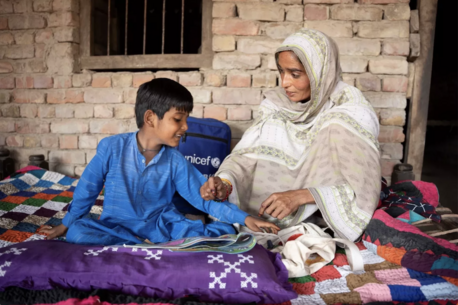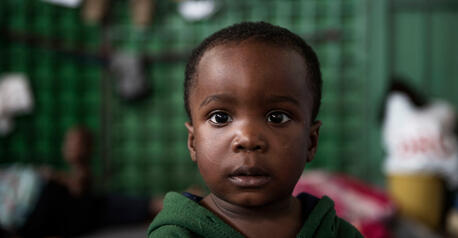
UNICEF in Libya
When catastrophic floods hit Libya in September 2023, UNICEF leveraged its longstanding presence in the country to deliver disaster relief to impacted children and families. Emergency response is just one aspect of UNICEF's overall mission, working to ensure that children are healthy, educated, respected and protected. Learn more and how to help.
Crisis for children in Libya
Before Hurricane Daniel — before the massive flooding that killed over 6,000 people, devastated entire communities and displaced an estimated 35,000 in the northeast part of the country — UNICEF had determined that some 526,000 people, including nearly 200,000 children, were in need of humanitarian assistance in Libya.
Between 2011 and 2020, hundreds of thousands of Libyans were displaced by fighting between rival factions and Islamic militias. With the negotiation of the 2020 cease-fire, and the tenuous stability that followed, many have since returned home.
But economic vulnerability remains the norm. Still reeling from the socio-economic impacts of both the COVID-19 pandemic and war in Ukraine, Libya saw its gross domestic product per capita shrink by half between 2010 and 2021.
Many children and their families lack access to basic needs — food, shelter, clean water and sanitation facilities, education, health care. More than one-third of Libya’s children live in multi-dimensional poverty. About 1 in 10 households rely on child labor to survive.
And the country's legacy of large-scale violence endures. Nearly three-quarters of children in Libya are at risk or survivors of violence, abuse and exploitation, including grave child rights violations. More than two-thirds of the nation’s children are in need of child protection services.
Children on the move are among the most vulnerable. Libya is both a destination and a route to Europe for asylum-seekers and migrants. The country hosts approximately 650,000 migrants and refugees, 78,000 of them children; another 160,000 people are internally displaced. The largest migrant/refugee populations are in Benghazi, Misrata, Tripoli and Sirt.
In the absence of effective border control, children and women on the move are especially vulnerable to various harms and protection risks created by smuggling networks and other criminal activities. Risks of family separation and other hardships are high. By some estimates children account for one-quarter of the migrants and asylum seekers being held in government detention centers, where conditions can be dire.
How UNICEF is helping children in Libya
With a presence in Libya since 1957, UNICEF prioritizes helping children on the move. That includes making sure that all children in the country, regardless of their nationality, legal status and place of residence, can get help as needed.
UNICEF is also focused on rebuilding the country's social safety net, which was weakened during more than a decade of low-level fighting and political gridlock.
Delivering emergency supplies and assistance in the wake of devastating floods
In September 2023, UNICEF rushed medicines and medical equipment, water purification tablets, high-performance tents and other items to areas affected by flash flooding from Storm Daniel to meet the most urgent needs of children and their families.
Some items had been pre-positioned inside the country in advance. Tens of metric tons of additional emergency supplies were shipped within days of the disaster from UNICEF's humanitarian supply warehouse in Copenhagen (which has the highest supply capacity) and from the regional warehouse in Dubai (closer to the disaster zone in Libya).
With nearly 300,000 children impacted by the flooding, and with hundreds of schools, health facilities and other critical infrastructure damaged or destroyed, UNICEF is committed to providing long-term support to assist the country's recovery.
More challenges lie ahead as Libya grows increasingly vulnerable to climate shocks, including water scarcity.
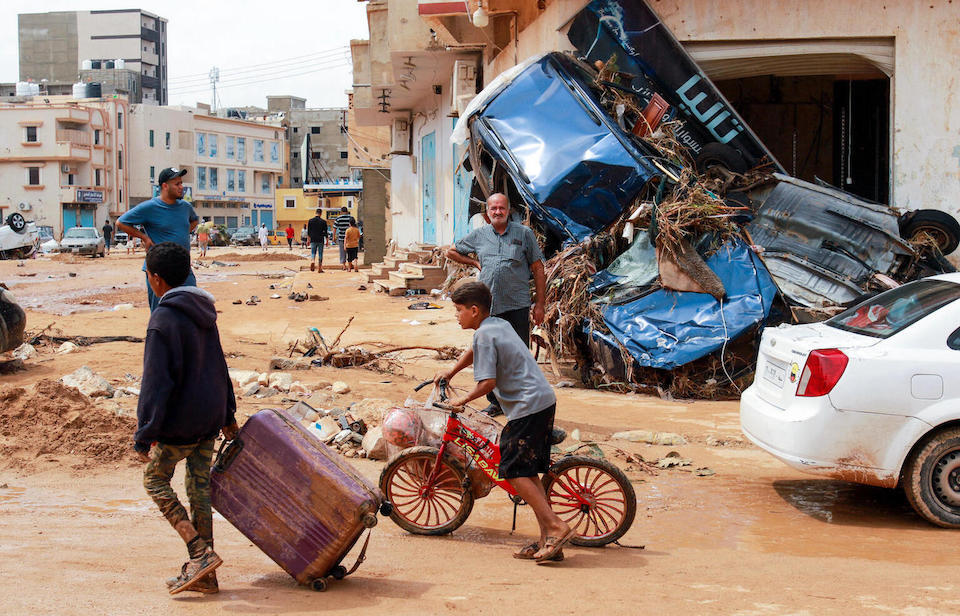
A focus on children's health and nutrition
To improve children's health in Libya, UNICEF focuses on building capacities of health workers and local health systems to deliver essential health care services, focusing on the needs of children, including newborns, and pregnant and breastfeeding mothers.
With about one-quarter of Libyan children at risk of vaccine-preventable disease, UNICEF also provides technical and financial support to the government to build and expand cold chain capacity — recently helping to install solar-powered refrigerators and cold boxes/tools at 700 vaccination sites. UNICEF has also been helping the country scale up community engagement and awareness around the importance of immunization and the promotion of healthy practices.
Ongoing nutrition support includes counseling mothers and caregivers on infant and child feeding, and providing micronutrient supplements for children and iron supplements for pregnant women.
To further help reduce nutrition-related deaths and disease, UNICEF is helping to build the government capacities for assessing and monitoring the nutritional status of children by location, so interventions can be targeted accordingly. Officials trained by UNICEF in data collection and statistical analysis released a nutrition survey in December 2022 that revealed malnutrition rates among children in Libya's southern region were exceptionally high, prompting calls for additional resources to fund more screenings and treatment in that region.
Creating opportunities for education and skills building
Years of armed conflict and the COVID-19 epidemic have taken a toll on the quality and availability of education in Libya. By some estimates, almost 1 in 5 families in the country have at least one child out of school.
UNICEF helps get children back to learning by providing families with cash assistance, supporting non-formal education programs and digital learning opportunities where formal education is not an option, and expanding life skills classes.
In partnership with the Ministry of Education, UNICEF is also helping to re-enroll out-of-school children where possible, while shoring up the educational infrastructure — training social workers and school counselors, supporting professional development for teachers, and developing remedial or "catch up" classes for children who have fallen behind.
Eight-year-old Maria (name changed), a Syrian refugee who fled to Misrata, Libya, in 2020 with her mother and sister, participates in a UNICEF-supported non-formal education program, where she studies English, math and Arabic, and also receives psychosocial support through classroom activities. “I love playing here," Maria says, "and I love my English teacher. She is super helpful, and she always smiles."
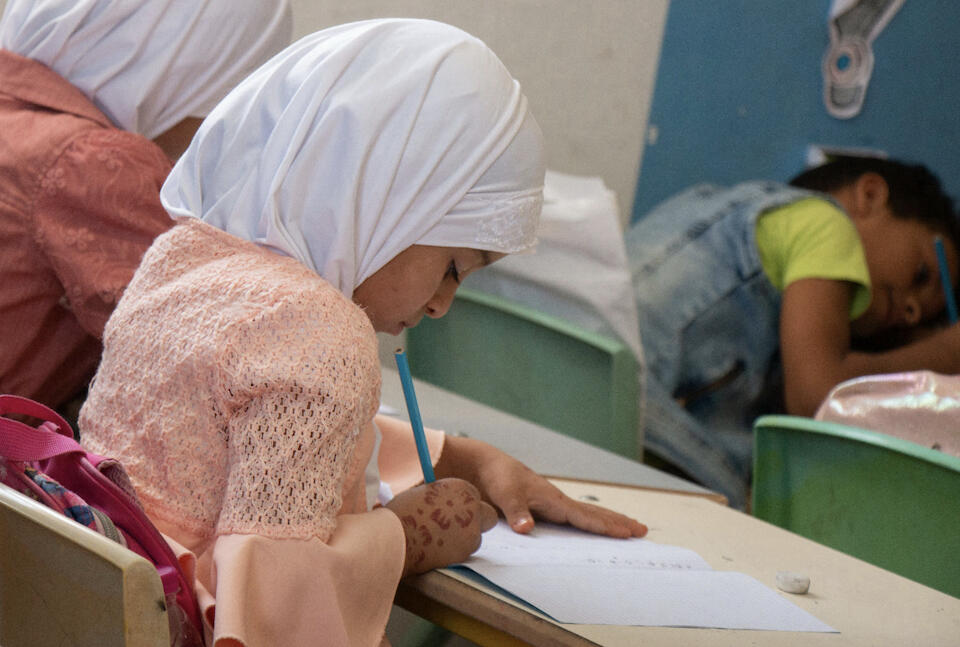
Other UNICEF-supported youth programs focus on creating opportunities for young people — especially girls and women, who are often marginalized — as the key to future stability and economic growth for the country.
UNICEF-supported life-skills programs aim to reach thousands of young men and women in Libya with entrepreneurial training as well as skills building for social, economic and civic engagement.
UNICEF looks to forge links between these skills and opportunity development programs, as well as other technical and vocational training programs and community-based protection services. There are also leadership programs for young people that focus on peace building.
Protecting children from violence
UNICEF is helping to build the robust infrastructure needed to protect children from threats like human trafficking, arbitrary detention, forced labor, physical abuse and sexual exploitation.
Hundreds of thousands of children need immediate protection from these threats, while many more are still grappling with the aftereffects of violence and abuse. In 2018, almost 3 out of 4 children interviewed reported having experienced physical violence over the course of the previous year, with teachers identified as the most frequent perpetrators. Almost 8 in 10 children reported experiencing emotional violence.
The first step toward solving the problem is awareness. UNICEF is committed to ensuring that all children and their families are able to recognize the signs of violence, and know how to report cases and seek help and services. To do so, UNICEF is partnering with local NGOs across the country to provide community-based trainings aimed at sensitizing both parents and children to the risks and resources.
Meanwhile, UNICEF is also:
- supporting family protection units, deployed through Libya’s Ministry of Interior, to monitor and intervene in specific cases
- supporting community-based mental health and psychosocial support services for at-risk children and child survivors of violence
- providing direct case management and referrals to specialized child protection services and child-friendly justice services at the municipal level
- helping to provide children on the move with alternatives to detention
Improving access to clean water and sanitation
Libya’s vulnerability to extreme weather events was made painfully clear with the arrival of Storm Daniel and the collapse of two major dams.
Libya is also in danger of running out of water. It is already the sixth most water-stressed country in the world, with some 90 percent of its supply derived from non-renewable sources. Existing infrastructure has been repeatedly damaged through the sabotage of the Man-Made River (a primary water source) and power cuts in recent years by armed groups.
Insufficient policies, budget allocation and a lack of capacity have hindered efforts to address these problems. Meanwhile, poor management of solid and medical waste poses a health risk. (Weak water, sanitation and hygiene systems have hindered efforts to reduce COVID-19 transmission during the pandemic.)
UNICEF is working to build capacity while addressing problems with existing WASH infrastructure, including at schools and health centers, with an emphasis on long-term solutions such as desalination and solar power. For instance, UNICEF recently supported the General Desalination Company in rehabilitating three desalination plants serving approximately 213,000 people.
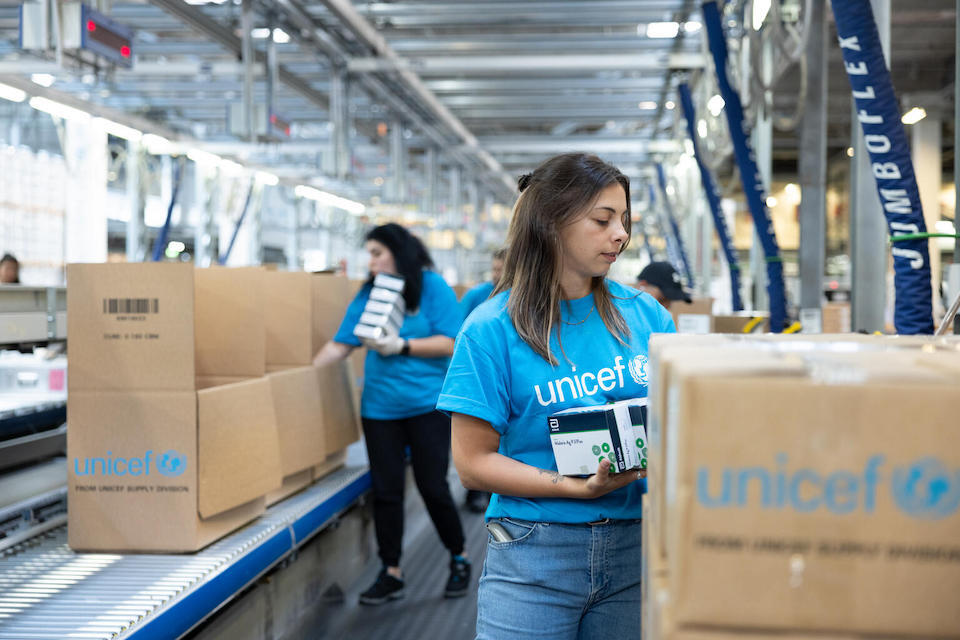
UNICEF works in over 190 countries and territories to deliver lifesaving and life-sustaining support and services to children and families in need. Your 100% tax-deductible contribution can make a difference. Support UNICEF's mission. Donate today.


